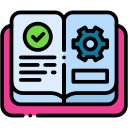
Best Tools for Remote Work Training: Build Skills Anywhere
Chosen theme: Best Tools for Remote Work Training. Welcome to a practical, inspiring guide to the digital toolkit that turns distance into a learning advantage. Explore platforms, engagement apps, content creators, and analytics that help distributed teams grow faster. Share your favorite tools and subscribe for fresh, field-tested tips.
Live Session Platforms That Keep Learners Present
Pick a platform based on your training goals, not habit. If you need stable breakout rooms and robust moderation, prioritize those features. If your team already collaborates in a particular suite, native integration might matter more. Share your go-to setup and why it works.
Breakout rooms shine when learners apply skills immediately—role‑playing customer calls, practicing handoffs, or whiteboarding service designs. Assign roles, keep time, and use clear rubrics. One facilitator told us their completion rates jumped when every session ended with a short, high‑stakes breakout challenge.
Interactive whiteboards and emoji reactions provide instant feedback loops. Rotate screen control to let learners demonstrate steps in real time. A trainer shared that simply enabling reactions tripled participation, because quieter teammates could signal confusion or approval without interrupting the flow.




Interactive Engagement Tools That Spark Participation
Quick pulse checks surface confusion before it derails the session. Ask concept checks every 10–15 minutes and show aggregate results to normalize uncertainty. One instructor found that a single anonymity option unlocked candid responses and doubled the number of clarifying questions.
Interactive Engagement Tools That Spark Participation
Design quizzes with meaningful feedback, not just scores. Explain why each answer works and link to a short refresher. Space questions across modules to strengthen recall. Readers often tell us that feedback‑rich quizzes feel like mini‑lessons they actually look forward to.


Rubrics that Mirror Real‑World Outcomes
Create rubrics aligned to job tasks: accuracy, speed, compliance, and collaboration. Publish them before training so expectations feel fair. A support lead told us that transparent rubrics reduced pushback and made coaching conversations faster, clearer, and far more constructive.
Digital Badges and Portfolios with Substance
Badges matter when they represent demonstrated ability. Pair each badge with a portfolio artifact—recorded demo, code snippet, or case write‑up. Managers then see evidence, not just icons. Invite your learners to post badge reflections and tag peers who helped them get there.
Ethical Verification for Remote Exams
When high‑stakes testing is required, prioritize privacy and fairness. Communicate rules clearly, test tech early, and offer alternatives when bandwidth falters. One cohort’s anxiety plummeted after a rehearsal exam that simulated every step, from check‑in to submission.


Create Compelling Training Content Fast
Record short, focused walkthroughs that answer one job‑critical question at a time. Trim silence, add simple callouts, and end with a next action. A product team cut onboarding time by sharing a five‑video playlist that new hires could replay whenever needed.
Create Compelling Training Content Fast
Create slide and document templates with consistent typography, color, and spacing. Visual predictability reduces cognitive load and speeds comprehension. Trainers tell us that a shared template library saves hours and helps dispersed teams present a unified, professional voice.
Collaboration, Mentorship, and Practice Loops
Create channel norms—tags for questions, solved markers, and weekly summaries. Pair chat with a living knowledge base to capture answers that shouldn’t vanish in scroll. A remote ops team cut repeat questions dramatically by linking every solution to a searchable page.

